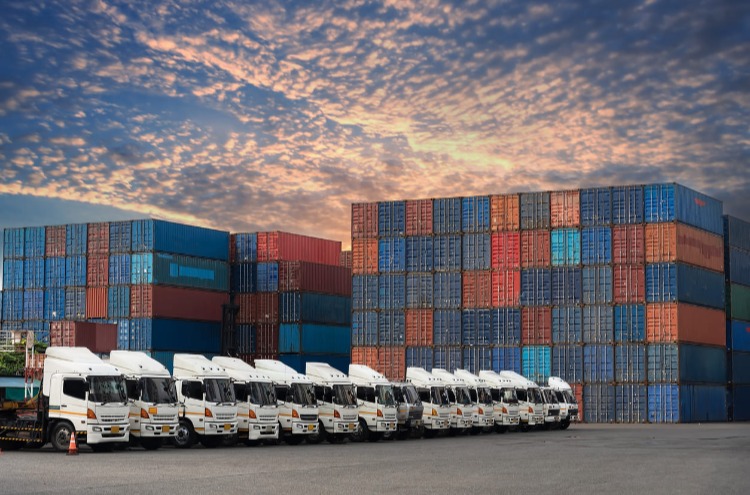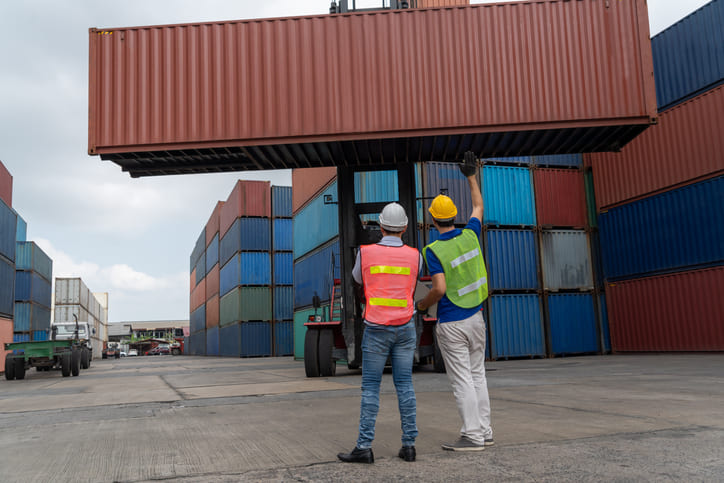Wine distribution: how to get your wines into your market
As a wine importer, getting your carefully selected wine portfolio into the hands of consumers is a critical part of the business. Your wine needs to be transported safely, in the best possible transit time and arrive as fresh as the day it was bottled. Once imported, your wine needs to be distributed to the places where it will be sold to consumers. Local laws and regulations can add to the complexity.
From navigating local laws and regulations to building relationships with distributors, the process of wine distribution can be complicated. In this article, we will explore the key steps involved in wine distribution to help you get your wines into your chosen market.
What is a wine distributor and what do they do?
Wine distribution is mostly invisible to the consumer, but it is a critical part of the supply chain. Wine distributors purchase wine from wine producers and then sell the wine on to retailers, restaurants and other points of sale. They are responsible for ensuring that wines reach their target markets.
Because wine distribution networks are different in different regions and markets, wine distributors can have slightly different roles depending on the particular market you are importing to. In some markets, an importer may also function as a wine distributor, but commonly a distributor’s role is more similar to a wholesaler’s.
How do you get wine into markets?
Before you can worry about how to distribute your wine in a market, it first needs to reach that market. A route to market is the path you take to get your wine into a market. Differences in laws and regulations mean these distribution pathways differ between countries. When choosing a route to market, you’ll need to consider:
- What documentation and certification is required
- What conditions will the wine require during transport
- Your freight and shipping costs.
- What will your profit margin be, after these costs
- The laws and regulations of the market you’re importing into
- The distribution channels available to you in that market
The needs and preferences of every party in the supply chain can also make a big difference to how your wine distribution route operates. As an importer, you may have been approached by wineries interested in growing their wine distribution network. Or, you may have sought out and chosen the products yourself.
How does wine distribution in the US work?
Because wine distribution regulations vary so much between markets, it is difficult to give a general overview of the process, but we can take the US import market as an example.
The US has a unique alcohol distribution system, and wine distribution is a licensed industry. It is a complicated system that can confuse and frustrate even those familiar with the market. Alcoholic product sales and distribution in the US mainly operates via what is known as the three-tier system. This system requires alcohol to pass through three tiers, from producers to distributors and then retailers, before finally reaching the consumer. The first tier can also include importers, as well as producers.
Wine distributors, in the second tier, purchase wine from the winery or importer and then sell it to retailers such as liquor stores, restaurants, and bars.
The three-tier system places restrictions on the ability of each tier to interact with the others. This means that manufacturers and importers cannot sell directly to retailers (or consumers), and retailers cannot purchase alcohol from manufacturers or importers. In other words, the first and third tiers can only interact via licensed wine distributors. This gives wine distributors a very influential role in how wine is sold in the US.
Each state also has slightly different alcohol distribution and imported wine license regulations. In some states, known as ‘control states’, the state itself is responsible for the distribution of beverage alcohol (either all spirits, wine, beer or a combination thereof). In ‘permit states’ licensed private companies can distribute all alcohol or specific categories.
The licensed wine distributors in the state will enter into an agreement with importers (or the winery directly) and sell or market it to bars, restaurants and retailers in their area. They often also use wine warehousing, which allows them to resupply retailers quickly.
Under the US system, importers function like wineries for wine distribution purposes. Importers identify great wines from outside the US and then go through the licensing and compliance process to bring it to market. This will involve securing the proper permits, approved labels, certification, customs setup and shipping documents to be able to order and import the product. Importers will also need to plan for distribution, either securing the proper permits for their state or contracting with distributors out of state to expand the availability of the product in the market.
Common wine distribution channels for the US market
There are different wine distribution channels that you can use to reach potential customers in the US, including:
- Off trade or off premise: retailers, such as wine stores and supermarkets.
- On trade or on premise: places that sell wine to be consumed on the premises, such as bars and restaurants.
- Ecommerce: sellers who sell to consumers via online sales, wine clubs or winery tasting rooms.
Responsibility for choosing a strategy may fall to the distributor or the importer in the US system.
Who is the biggest distributor of wine?
The variation in wine regulation between countries and regions means that distributors usually operate exclusively within a certain region. For example, the biggest wine distributor in the US is Southern Glazer's Wine & Spirits.
Is the demand for wine increasing?
Globally, the wine market is increasing and is expected to continue to grow for the foreseeable future. Expanding distribution channels, alongside an increase in wine production and variety, means that wine imports and exports have been booming. In the US, the wine market is expected to grow by over 16.9% in the next 10 years. Online sales have also made it easier for consumers to access a wide range of wines from different regions and producers, and combined with wine tourism has helped to increase interest in new wine styles and regions.
Find out how we can help streamline your wine distribution planning
The journey to market when shipping wine can be complex: it requires intricate planning, and flawless execution. Hillebrand Gori can give you all the information and tools you need to both understand and succeed in your market.
Contact us to find out how we can help.
Published 9th June 2023, updated 17th November 2023
A wine broker facilitates the connection between producers and buyers without physically handling the wine; a distributor takes possession of the wine, helping to facilitate the sale.
When choosing a distributor, consider their distribution channels, experience in the market and reputation. Conducting thorough research and contacting other producers can provide valuable insights and recommendations. Additionally, attending trade shows and industry events can offer opportunities to network with potential distributors.
Common challenges include navigating complex regulations, managing inventory and finding distribution channels. Wine distribution also requires price flexibility and a strong understanding of consumer preferences.
Technology can streamline processes and provide better data management. For example, inventory management software helps distributors track inventory levels, manage orders and deliveries. Online marketplaces and e-commerce platforms provide a wider reach for producers to access new markets and customers. Data analytics tools also provide valuable insights into consumer behaviors and preferences.
How can we help your business grow?





